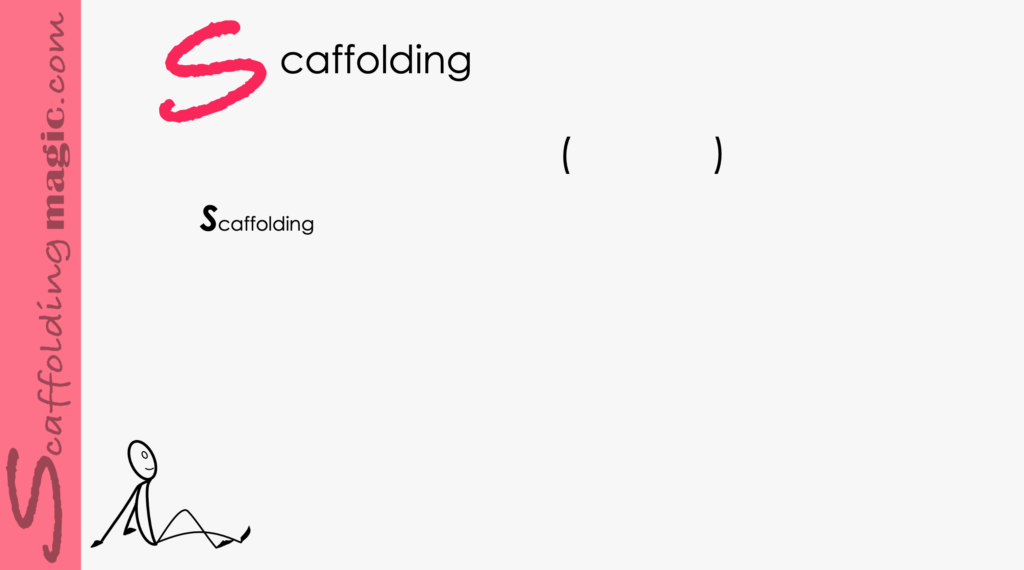You caught a beauty!!!
Download PDF of scaffold here.
When, at a course I gave last month in Galway, Ireland, I saw the participants looked at me aghast at the thought of limiting their direct teaching to less than 15 minutes at a time, I knew that I had much work to do. The truth is, within 3 minutes of any direct teaching – lectures, presentations, etc. – students have already tuned out. Whether we manage to get their attention again is never certain. Scaffolding helps enormously in these situations, especially when we have any concepts that we need to impart, to engage students from the very beginning and to create a dynamic in which they are active participants in the presentation.
This scaffold is for all those teachers out there who don’t believe they can limit their time standing in front of their students and talking. It’s the first step in taking attention away from you and directing it more actively to your students. The examples are taken from an interactive plenary about Collective Teacher Efficacy.*
*The strongest influence on student achievement according to John Hattie’s last two studies.
Step by step: CLIL CONCEPTS MNEMONIC DEVICES
- In a PPT or any other type of software that suits you, create your presentation with the many concepts that you need to cover.
- From each concept, choose one word that is representative of the whole idea.
- Make a list of the first letter of each of these words on one slide or poster. Next to each letter put the word that it represents in a separate text box so that it can appear when. you are ready for it. The idea is that the students focus on the letters first, the words second and then they will more easily assimilate the concept when they see both later in the presentation.


4. In the beginning of the presentation (the third or fourth slide, for example), show the letters and then go over the words (fairly quickly). This is an introduction to words that they will soon see so you don’t need to spend too much time on them.
5. On each slide that represents one of your targeted concepts, show the letter from the word that represents the concept, show the word, next, in a separate text box with the first letter highlighted, and then the rest of the slide.
6. At the end of the presentation, do a formative assessment, going back over the list of letters that you highlighted in the beginning, and before showing the words that they represent, elicit the matches first either verbally or written. Now you know if your students have taken in the many concepts you’ve presented!


Scaffoldingmagic.com is your entryway into DYNAMIC bilingual learning methodologies, such as Phenomenon-Based Learning, CLIL, EMI, and ESL. You’ll find ways to implement critical thinking tools (DOK) to promote higher level thinking, the growth mindset, instill an ethic of excellence, deep reflection on learning, and all through multi-cultural, interdisciplinary activities. We have the keys to turning competences into action and to creating collective efficacy in your school so you move ahead as a unified, enthusiastic team.



